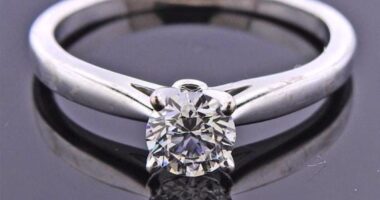Advanced technology has revolutionized the way in which precious gems are created, allowing for a great deal of versatility and customization. Today, it is possible to create lab-grown diamonds as well as moissanite stones using advanced technology.
In this article, we will discuss the differences between these two types of stones and compare them side by side in terms of their properties, cost, sustainability and more.
1. Understanding the Basics of Lab-Grown Diamonds and Moissanite
Advanced technology has revolutionized the gemstone industry, allowing us to create beautiful and unique diamond and moissanite pieces with incredible precision.
Understanding the basics of lab-grown diamonds and moissanite is key to making an informed decision when selecting a stone for a piece of jewelry. Lab grown diamonds uk are created in a controlled environment using chemical vapor deposition, resulting in stones that have identical physical properties as their naturally mined counterparts.
Moissanite on the other hand is made from silicon carbide crystals grown in laboratories, creating gems that have exceptional brilliance and fire with more durability than traditional diamonds.
Both types of stones offer many benefits over natural gems including affordability, sustainability, and ethical sourcing. A comprehensive comparison between these two advanced gemstones will help you determine which option best fits your needs.
2. Examining the Quality, Characteristics, and Properties of Lab-Grown Diamonds vs. Moissanite

Advanced technology has revolutionized gemstone creation, allowing for the creation of both lab-grown diamonds and moissanite. Both gems offer similar characteristics, such as their sparkling clarity and fire, but there are key differences between them that set them apart.
Lab-grown diamonds tend to have a higher refractive index than moissanite, meaning they sparkle more brightly and are harder to detect as synthetic stones. They also often come with a certificate of authenticity from an independent laboratory, ensuring they meet industry standards in terms of quality and purity.
Moissanite on the other hand is generally less expensive than lab-grown diamonds due to its lower price point per carat weight. Furthermore, it’s said to be up to 10 times more durable than diamond which makes it an ideal choice for everyday wear or jewelry pieces that will see frequent use.
Ultimately both options offer unique advantages depending on individual preference; ultimately it comes down to personal taste when choosing between these two beautiful gemstones!
3. Assessing Financial Considerations When Choosing Between a Lab-Grown Diamond or Moissanite
When considering the financial cost of a lab-grown diamond or moissanite, it is important to take into account the current market value and production costs. Lab-grown diamonds are more expensive than their natural counterparts because they require advanced technology and skilled labor to create them.
On the other hand, moissanite is relatively cheaper since its production does not involve any sophisticated processes or equipment. Furthermore, due to their unique properties, lab-grown diamonds may appreciate in value over time while moissanite will remain constant in price depending on the size and quality of the stone purchased.
Ultimately, when choosing between a lab-grown diamond or moissanite one should look at both their current market values as well as how those values may change over time before making an informed decision.
4. Exploring the Environmental Impact of Synthetic Gemstones

Advanced technology has revolutionized the gemstone industry. With the introduction of lab-grown diamonds and moissanite, consumers now have more affordable and sustainable options when shopping for jewelry.
By exploring the environmental impact of synthetic gemstones, we can gain a better understanding of how they compare to natural gems. Lab-grown diamonds are created in a laboratory using advanced processes that require minimal energy input.
Additionally, these gems produce no carbon emissions during production and do not involve any mining activities that could cause harm to ecosystems or wildlife habitats.
Moissanite is also an environmentally friendly alternative as it is produced through chemical vapor deposition with only trace amounts of hazardous materials used in its creation process. Both lab-grown diamonds and moissanite provide eco-friendly alternatives to traditionally mined stones while still offering stunning beauty at an affordable price point.
5. Comparing Durability and Longevity when Deciding Between a Lab-Grown Diamond or Moissanite
When considering the durability and longevity of a lab-grown diamond or Moissanite, an advanced technology in gemstone creation, it is important to compare both materials.
Lab-grown diamonds are made from pure carbon that has been subjected to extreme temperatures and pressures just like mined diamonds; therefore they possess nearly identical physical properties as natural diamonds. This makes them extremely durable and long lasting with a Mohs hardness rating of 10 out of 10.
On the other hand, Moissanite is not composed of carbon but rather silicon carbide which gives it less durability than diamond but still makes it suitable for everyday jewelry wear due to its hardness level of 9.25 on the Mohs scale.
Both lab-created stones will last longer than any other gemstones and should be taken into account when making your final decision between them in terms of durability and longevity.


